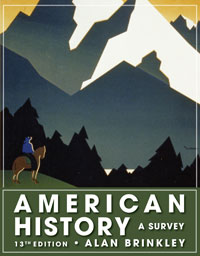1 A) Mayan. B) Inca. C) Aztec. D) Chaco. E) Olmec. 2 A) hunting and gathering. B) herding. C) fishing and gathering. D) agriculture. E) trade. 3 A) woodland Indians. B) plains Indians. C) mountain Indians. D) coastal tribes. E) pineland tribes. 4 A) emphasized monotheism. B) utilized totem poles in their ceremonies. C) were tied closely to the natural world. D) were not very important to their culture. E) were centered on human sacrifice. 5 A) reserved the highest religious position for women. B) tended to divide tasks according to gender. C) put women in important political positions. D) did not allow women to exercise any control over social or economic matters. E) made little distinction between gender roles. 6 A) was dominated by the Protestant Church. B) was dominated by the Vikings. C) built economies based on commercial agriculture. D) was dominated by merchants looking for new markets beyond the boundaries of their own nations. E) was too divided and decentralized to inspire great ventures. 7 A) the return of the Black Death. B) the invention of the compass. C) the revival of the African slave trade. D) the rise of united and powerful nation-states. E) the discovery of a direct route to the Indies by sailing west. 8 A) Portugal. B) Germany. C) England. D) France. E) Venice. 9 A) got involved in the Indian slave trade. B) soon went to war with France. C) replaced Portugal as the foremost seafaring nation. D) opened trade with the great khan in China. E) sent Balboa to conquer Peru. 10 A) made possible the creation of a Spanish empire in America. B) brought capitalism to Mexico. C) founded St. Augustine. D) introduced African slavery into America. E) looted the seven cities of Cibola. 11 A) native religions died out. B) Spain lost control of St. Augustine. C) rebellions against whites ceased. D) Spain was able to control all southwestern tribes. E) most natives continued to practice their own religious rituals. 12 A) resulted in the permanent expulsion of Spain from New Mexico. B) allowed the Pueblos to regain temporary political control of their communities. C) resulted in the annihilation of the Pueblo people. D) resulted from the unjust takings of Pueblo land by the Spanish. E) led the Pope to excommunicate the conquistadors. 13 A) exchange of plants and animals. B) European adoption of native customs. C) native adoption of European ways of waging war. D) intermarriage of Europeans and natives. E) importation of European diseases. 14 A) importation of new crops that could feed larger numbers of people. B) discovery of new forms of religious worship. C) Indian labor force. D) architectural knowledge gained from the Aztecs. E) the domination of the mestizos. 15 A) the father is the sole authority in the family. B) local gods are the basis of religious beliefs. C) women play a major, often dominant, role. D) slavery does not exist. E) men and women share child-rearing responsibility. 16 A) in the fifteenth century, soon after the Spanish conquest. B) as early as the eighth century A.D. C) with the English settlement of Virginia. D) when the sugar industry moved to the Caribbean. E) with the decline of Indian population in the Caribbean. 17 A) the rising European demand for sugar cane. B) the need for labor in the tobacco fields. C) a desire to Christianize Africans. D) the English entry into the slave market. E) the need for labor in the rice plantations of South Carolina. 18 A) to escape religious strife at home B) to bring the Christian religion to the Indians C) to escape the economic transformation of the countryside D) to find new markets for English products E) to defeat the Spanish Armada 19 A) Baptists. B) Presbyterians. C) Methodists. D) Puritans. E) Episcopalians. 20 A) all they needed to do was subdue the natives and rule them. B) they must retain a rigid separation from the native population. C) they could not build a complete society of their own. D) they should intermarry with Native Americans. E) Catholicism should be exported to America. 21 A) Spain. B) Holland. C) France. D) Germany. E) Andorra. 22 A) Massachusetts Bay. B) Jamestown, Virginia. C) Plymouth, Massachusetts. D) St. Augustine, Florida. E) Roanoke plantation, North Carolina. 23 A) John White. B) Sir Francis Drake. C) Humphrey Gilbert. D) James Cobb. E) Walter Raleigh.





